Unlock Relief for Ear Congestion: Eustachian Tube Pressure Points Explained
If you’re struggling with uncomfortable ear pressure or blockage, you’re not alone. These issues are often linked to the eustachian tube, a crucial but sometimes problematic part of our ear’s anatomy. Thankfully, there’s a gentle yet effective approach to finding relief: eustachian tube pressure points. Whether you’re dealing with a feeling of fullness, discomfort, or pain in the ear, turning to specific pressure points can offer significant ease.
The eustachian tube plays a vital role in maintaining ear health, balancing air pressure, and draining fluids. However, when it becomes blocked or dysfunctional, it can lead to discomfort and even pain. Understanding this tube’s importance is the first step in appreciating how pressure point techniques can be beneficial in alleviating these issues.
In this guide, we’ll delve into how certain pressure points can help ease the discomfort associated with eustachian tube problems. Drawing upon the expertise of Dr. Leonor Liz, a TCM specialist renowned for her skills in acupuncture, we offer you safe and effective methods to address these ear issues through acupressure.
Are you ready to discover how simple pressure techniques can bring you significant relief? Let’s explore these therapeutic pressure points together and unlock the key to better ear health and comfort.
The Ten Pressure Points For Ear Congestion That You Need To Know About
While acupuncture needs to be done by a professional practitioner, you are free to do acupressure and reflexology on your own. Knowing the right pressure points for ear congestion is vital. And that is what I am here for. In the following, I will share the ten best acupoints so that you, too, can enjoy the benefits of acupressure for ear congestion from the comfort of your own home!
Acupoint: TE-3 (Other Names: Triple Energizer-3/Zhong Zhu/Central Islet)
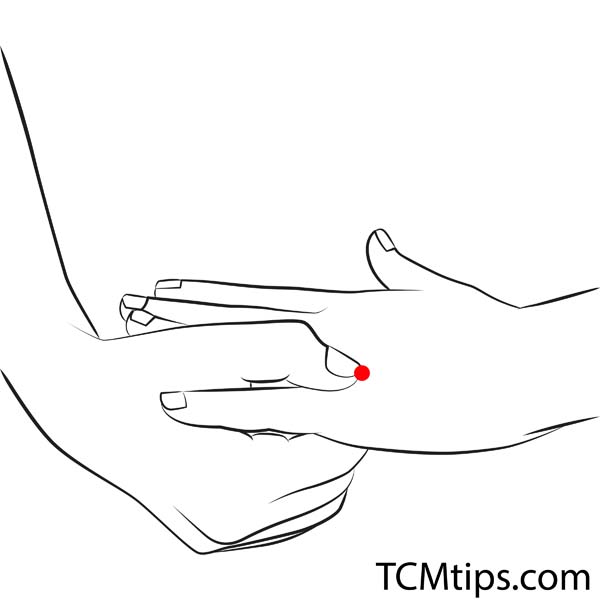
The Triple Energizer-3 is a very important acupoint that supports ear health. You may find it strange that an acupoint supposed to benefit your ears is not located anywhere near them. That, however, is not a rare occasion in the practice of acupressure and reflexology. We often see acupoints with multiple benefits, many of which refer to body organs that are far away from the actual acupoint. But, where exactly will you find the TE-3?
The TE-3 is located on the groove formed by the tendons of your fourth and fifth fingers. To find this acupoint and apply pressure, it is best to use your pointer finger. My advice would be to apply a firm, deep pressure for 4-5 seconds. Do not forget to stimulate the TE-3 on your other hand as well. This will help relieve any headache that has been caused by your blocked sinuses.
Acupoint: TE-17 (Other Names: Triple Energizer-17/Yi Feng/Wind Screen)
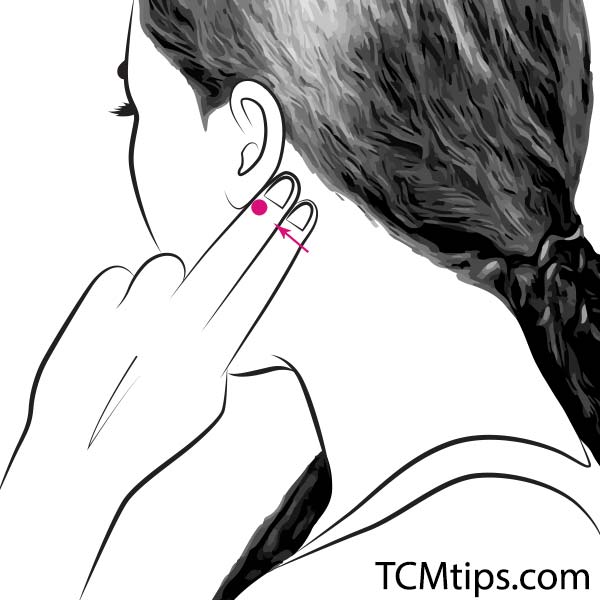
Stimulating the TE-17 will, perhaps, make more sense since it is located near your ears. You can identify the TE-17 by palpating the depression between the mandibula’s angle and the mastoid process. Its stimulation can help soothe any ear issues, tension, and pain around the face. Applying deep pressure for 4-5 seconds on each side will provide almost immediate relief.
Acupoint: TE-20 (Other Names: Triple Energizer-20/Jiao Sun/Minute Angle)
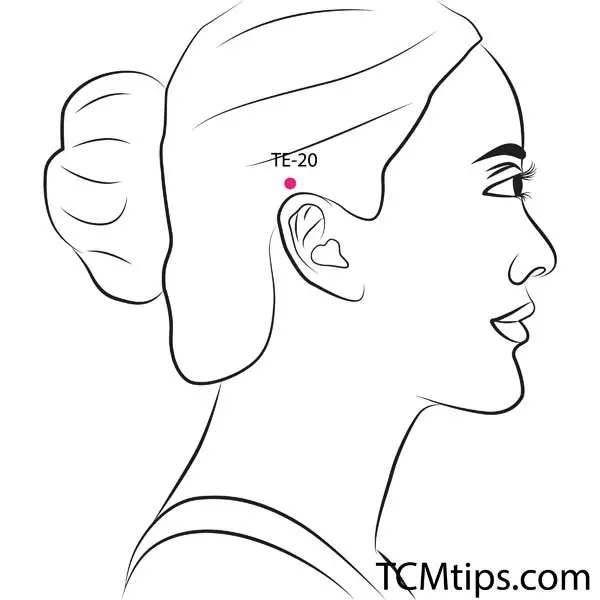
The next acupoint is TE-20. The daily stimulation of the TE-20 can significantly help improve your hearing and vision. Loss of hearing, tinnitus, headaches, and eye problems are some of the most common issues treated with the help of TE-20. This acupoint is located in the temporal region and corresponds to the apex of the ear. Make sure to apply deep pressure for 10-15 seconds on each side to get the most out of this acupoint.
Acupoint: TE-21 (Other Names: Triple Energizer-21/Er Men/Ear Gate)
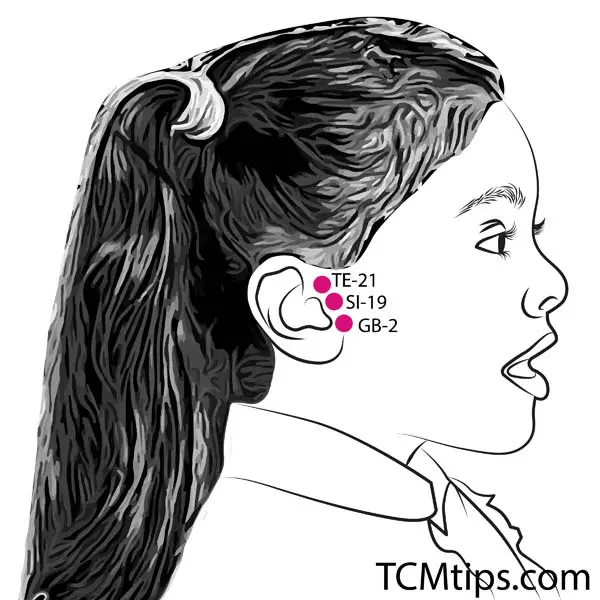
The TE-21 or also known as the Ear Gate acupoint is located where your earlobe begins. To better find this acupoint, open your mouth. Next, using your pointer finger, palpate the depression in this area. This is where the TE-21 is located. Applying mild pressure for 5-10 seconds on each side will help soothe any pain linked to the temporomandibular syndrome, tinnitus, and otorrhea. It will also relieve some of the pressure inside your ears and sinuses and stimulate their drainage.
Acupoint: LU-5 (Other Names: Lung-5/Chi Ze/Cubit Marsh)
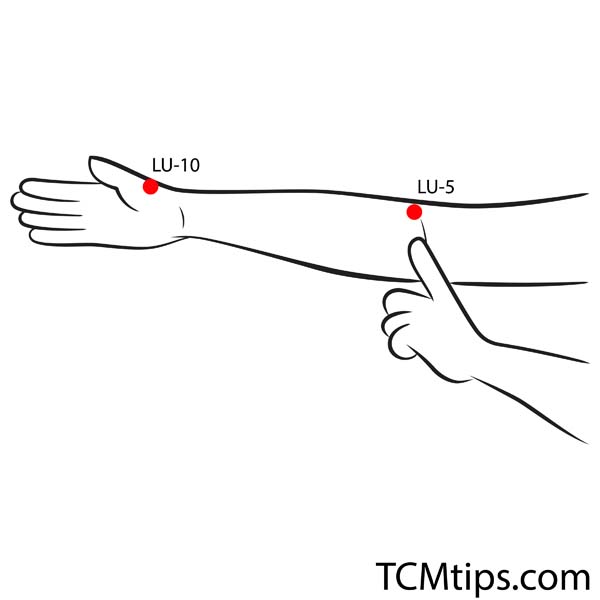
If you were to palpate the cubital crease on the radial side of the forearm, on the outside of each elbow, you would be applying pressure to the LU-5 acupoint. The LU-5 acupoint can significantly improve your sinus congestion and relieve any symptoms such as the runny nose and sinus pressure. This is, in fact, one of my favorite acupoints to treat painful sinuses. If you, too, will apply reflexology for ear drainage, do not forget the LU-5. Simply apply mild pressure for 10 seconds and switch sides, stimulating the LU-5 on both sides.
Acupoint: LU-9 (Other Names: Lung-9/Tai Yuan/Supreme Abyss)
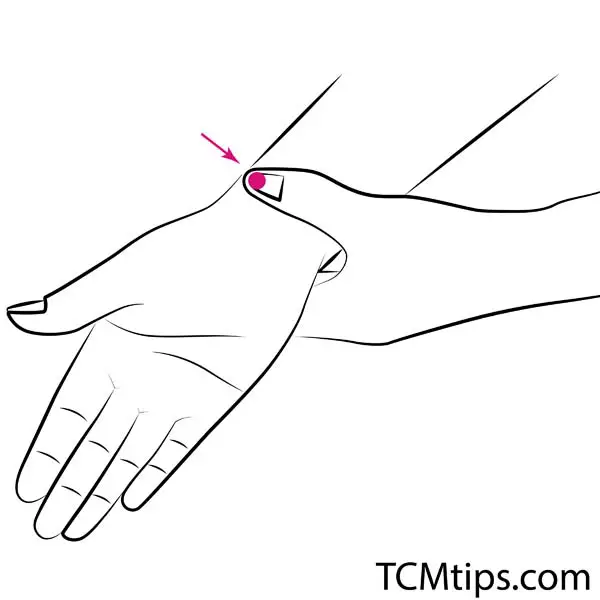
The LU-9 is found on the outside of each wrist. Ms. Leonor Liz explained that it is only located on the inside of each wrist if you go by the Chinese anatomical position rather than the standard anatomical position. To be more precise, you would palpate the transverse crease of the wrist on its radial side. Apply deep pressure and massage the area on each side to stimulate the LU-9. This is an excellent acupoint that can relieve cough, asthma, and a sore throat other than sinus issues.
Acupoint: LI-4 (Other Names: Large Intestine-4/He Gu/Joining Valley)
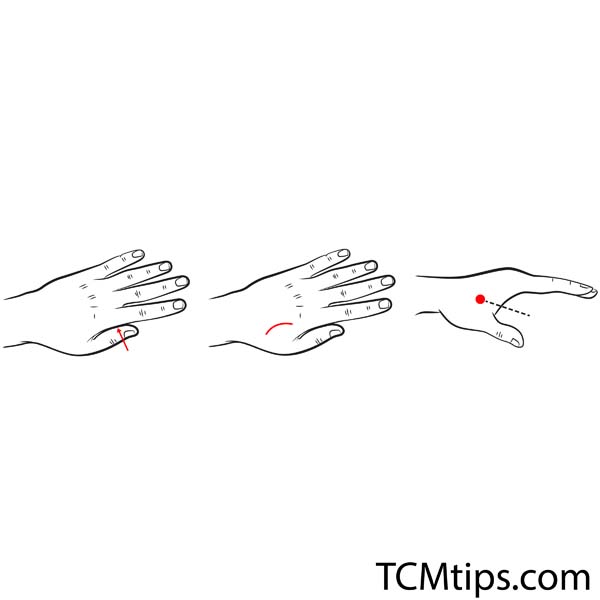
The next acupoint on today’s list is the LI-4. The LI-4 is located on your hand, far away from the ears. Despite that, it will help soothe any toothache, headache, stress, and facial pain. Ms. Leonor Liz advises pregnant women should use LI-4 with caution or not use it at all, even though it is a great acupoint for ear congestion. To palpate the LI-4, use your thumb to locate this point between the web of the first and the second finger. Apply deep pressure and massage the area for 4-5 seconds.
This acupoint is one of the favorite acupressure points together with PC 9 acupuncture point for many office workers in case you do not know.
LI-4 is also one of the top 10 acupressure points to relieve body pains & aches.
Acupoint: LI-20 (Other Names: Large Intestine-20/Ying Xiang/Welcome Fragrance)
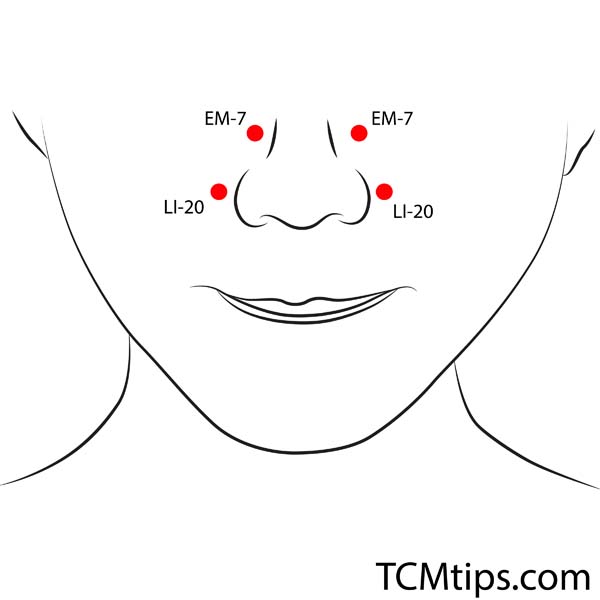
Acupoint LI-20 is a useful pressure point for sinus congestion. This acupoint is located on the face, beside the borders of the nostril. You’ll find it on the nasolabial groove, at the mid-point of the border of the nostril. It’s function in TCM is to open the nose, clear heat, and improve breathing.
Clinically, acupuncturists use LI-20 to treat rhinitis, sinusitis, wry face, acne, and even toothache. All you have to do to activate this acupoint is locate it with your pinky fingers and apply gentle pressure. You may also move your pinky fingers in a circular motion until your symptoms reduce.
Acupoint: EM-7 (Other Names: Bi Tong)
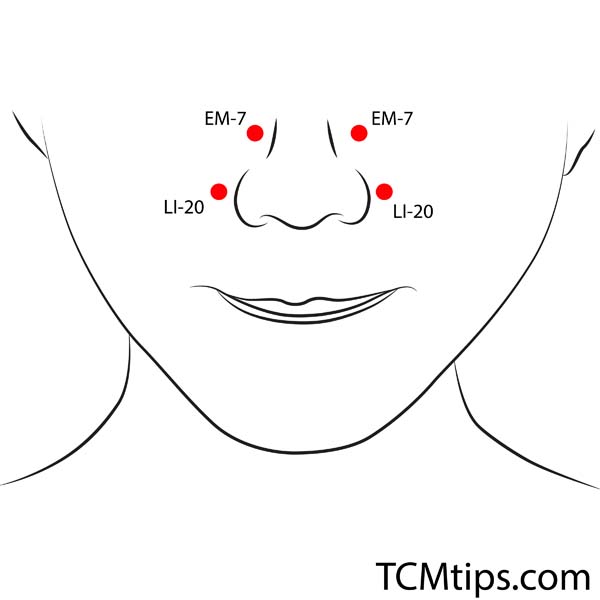
Bitong is close to LI-20 and is also a useful acupoint to clear nasal obstruction. This pressure point is located on the face. You’ll find it along your nose, at the highest point of the nasolabial groove. In TCM, Bitong serves to benefit the nose.
Clinically, it is used to relieve symptoms of Rhinorrhea, soreness in the nasal region, nasal obstruction, and nasal boils. All you have to do is locate the acupoint with your finger and massage gently for up to 2 minutes.
Acupoint: EM-2 (Other Names: Yin Tang/Hall of Impression)
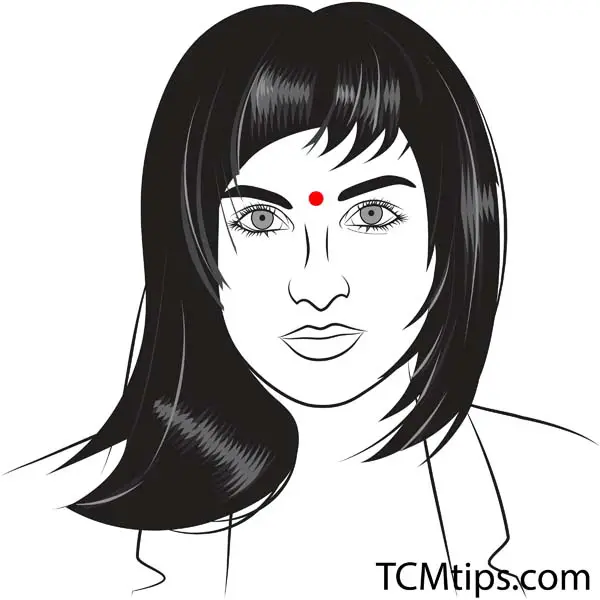
Yintang is another acupoint that helps sinus problems. A 2018 research found combining Yintang and LI-20 to be effective in relieving nasal allergic symptoms. Like LI-20, Yintang is also found on the face. But unlike LI-20, Yintang is not around the nose. Yintang is located on the forehead, at the midpoint between your eyebrows.
In TCM, this acupoint works to calm the spirit, clear wind, and open up the nose. Based on these functions, Yintang is effective in treating rhinorrhea, headache, vertigo, sinus pain, nose bleed, and insomnia. All you have to do to activate the benefits of Yintang is to locate the acupoint with your index finger and massage in a circular motion for up to 2 minutes.
Should You Try Reflexology For Ear Drainage?
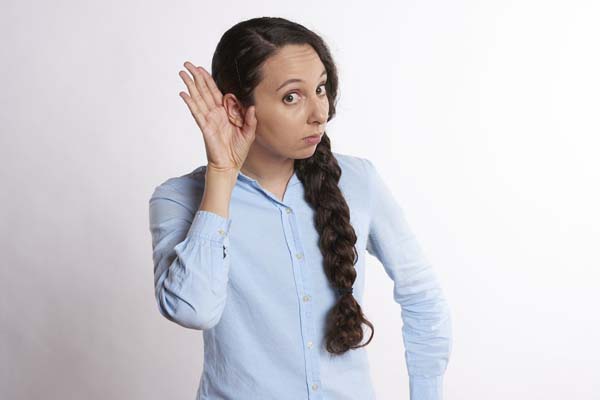
Safety Tips Before Applying Pressure Points
Before trying eustachian tube pressure points for ear congestion, keep these safety guidelines in mind to ensure a safe and effective practice:
- Wash your hands thoroughly to minimize the risk of infection.
- Avoid excessive force; gentle pressure is sufficient and safer.
- Cease immediately if you experience pain, discomfort, or dizziness, and seek medical advice.
- Not a substitute for professional healthcare; if symptoms persist, consult a healthcare provider.
- Be cautious especially if you have a history of ear problems.
Conclusion
As we learned today, acupressure can prove effective for ear congestion, including your troubling blocked sinuses. If you were to use acupressure for ear congestion and sinuses problems, you would be able to help your condition significantly. Not to mention that acupressure is easily done on your own, wherever you may be. Whether it is in your bedroom or a hotel room, acupressure offers almost instant relief for your troubles. Give these eustachian tube pressure points a try and feel the difference afterward.
Photo by Hayes Potter on Unsplash, Mk2010

Try our Anti-Aging Gua Sha Tool designed to bring out your skin’s natural glow.
Best Gua Sha Product- Anti-Aging: The tool is designed to target 11 specific aging signs such as wrinkles and sagging skin. By following the 7-step routine, users can improve skin firmness and reduce fine lines naturally.
- Enhances Skincare Routine: It works effectively with serums and lotions, boosting absorption and efficacy of skincare products.
- Visible Skin Improvement: Users can expect a smoother complexion, reduced puffiness, and a more youthful appearance.
 P. Sze
P. Sze 


















